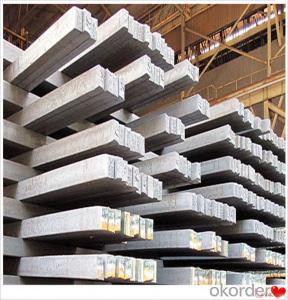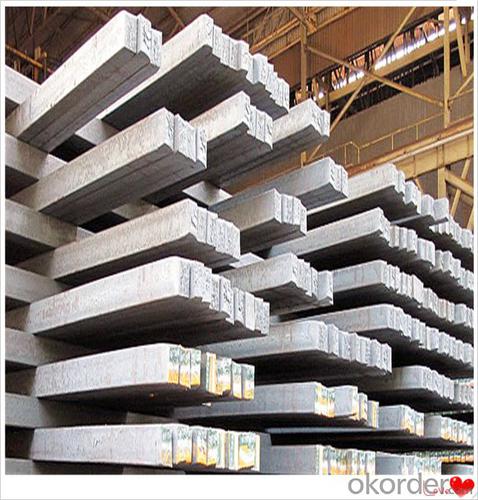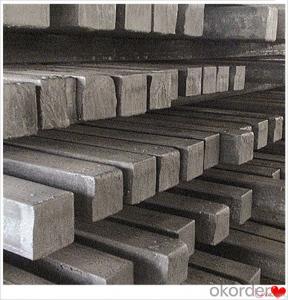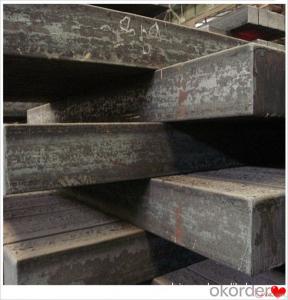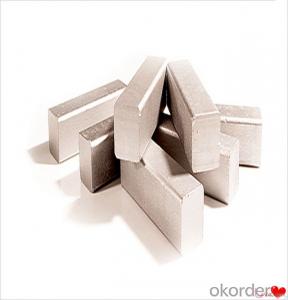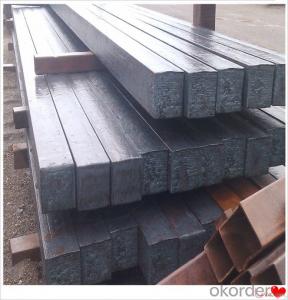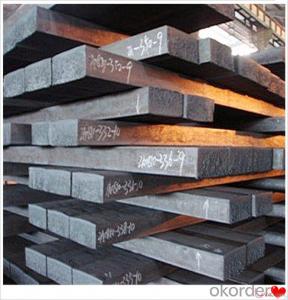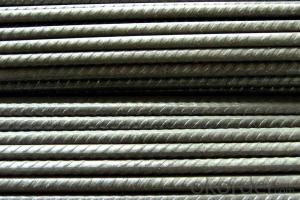Q275 Steel Billets Q235,Q255,Q275,Q345,3SP,5SP,20MnSi Made in China
- Loading Port:
- China main port
- Payment Terms:
- TT OR LC
- Min Order Qty:
- 20 m.t.
- Supply Capability:
- 200000 m.t./month
OKorder Service Pledge
OKorder Financial Service
You Might Also Like
Q275 Steel Billets Q235,Q255,Q275,Q345,3SP,5SP,20MnSi Made in China
Specification
Steel billet(ingot) by cogging or breakdown of semi-finished products, is the raw material of all kinds of steel mill. Billet section of square, round, flat, rectangular and abnormity of several kinds of, mainly related to the shape of rolled products.
CNBM Q235,Q275,Q345,3SP,5SP,20MnSi Billets Steel
Hot Rolled Steel Billets/ Mild Steel Bar/ Billet Steel
Specification (see below)
Standard: GB/JIS/ASTM
Size: 50*50mm-180*180mm
Length: 3-12mtrs or Customised
Steel material: Q235,Q255,Q275,Q345,3SP,5SP,20MnSi
Technique: Hot rolled
FOB Unit Ton Price $250-350 and Usually I will quote you CFR price.
MOQ: Usually 1000-10000MT/size
Shipment:By Container,Bulk Vessel
Packaging Details: bundles with steel strips or as customers's requirements
Delivery time: Usually within 30 days after the deposit/LC
Inspection:Third party inspection before loading.
Technical data
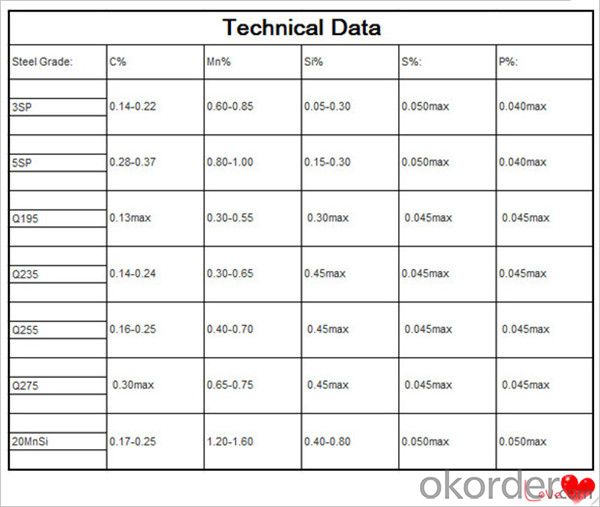
Feature Steel Billet
Rectangular billet continuous casting billet and mainly general carbon steel, low carbon low silicon cold-rolled material, high quality carbon structural steel, high strength low alloy steel, special steel, etc.
The billet is mainly divided into two kinds from the shape:
Slab: cross section width and height of the ratio of the larger, mainly used for rolling plate.
Billet: equal cross section width and height, or a huge difference, mainly used for rolling steel, wire rod. ,
Steel billets have distinct characteristics as compared with already furnished steel bars and products. Billets have a specific grain structure, which enables the metal to be processed more intricately. Steel billets are also known for their malleability and ductility, especially when exposed to varying temperatures during shaping and molding.
Packaging & Shipping
1. Packaging:
1) Small size: in bundles
2)Big size: in bulk
3)in plastic packing or as per customer requirement
2. Delivery time:
1) Normal size: within 7days send from warehouse directly
2) Special size: with 25-30days customer made for you
3. Trade terms:FOB/CFR/CIF
4. Shippment:
1) length:≤5.8m loaded in 20FT Container with 25-27tons
2) length:≤11.8m loaded in 40FT Container with 25-27tons
3) lengnth:≥12m shipped by bulk vessel, FILO terms
Steel Billet Images
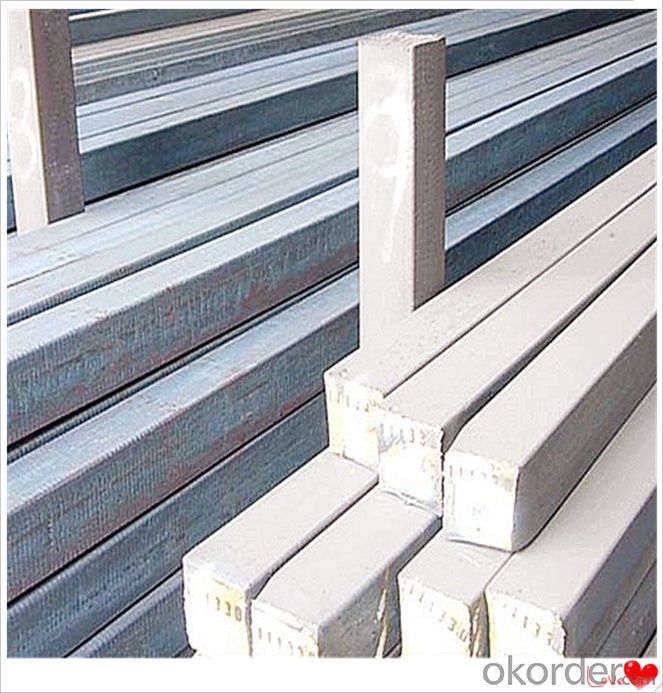
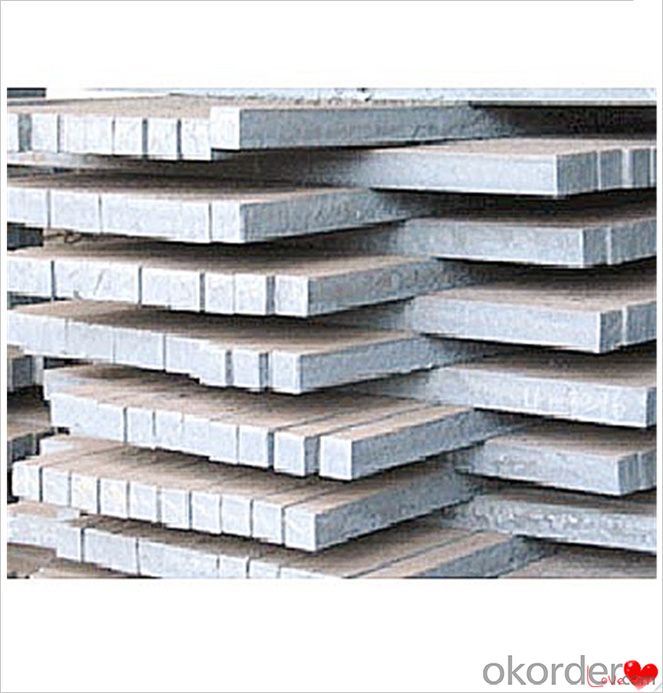
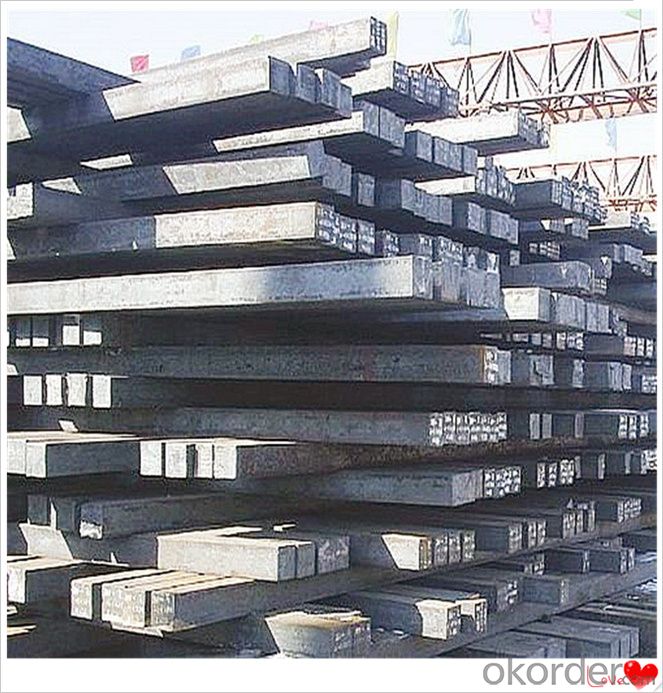
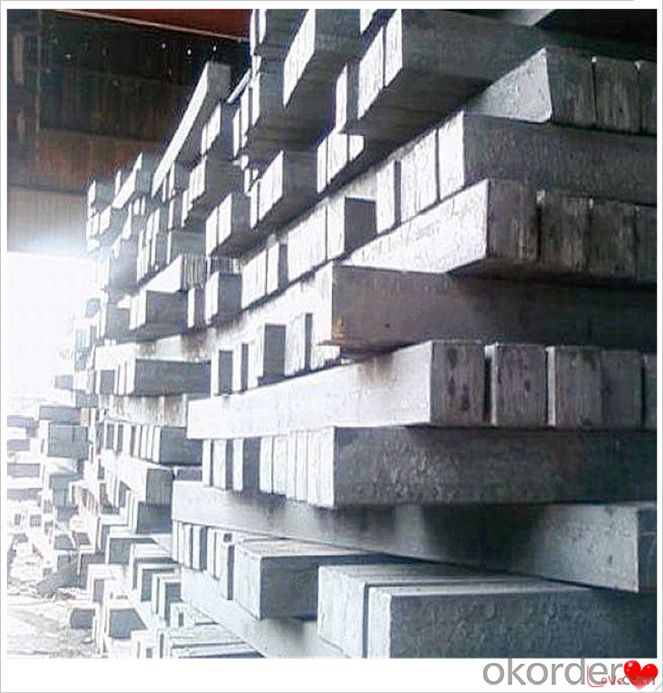
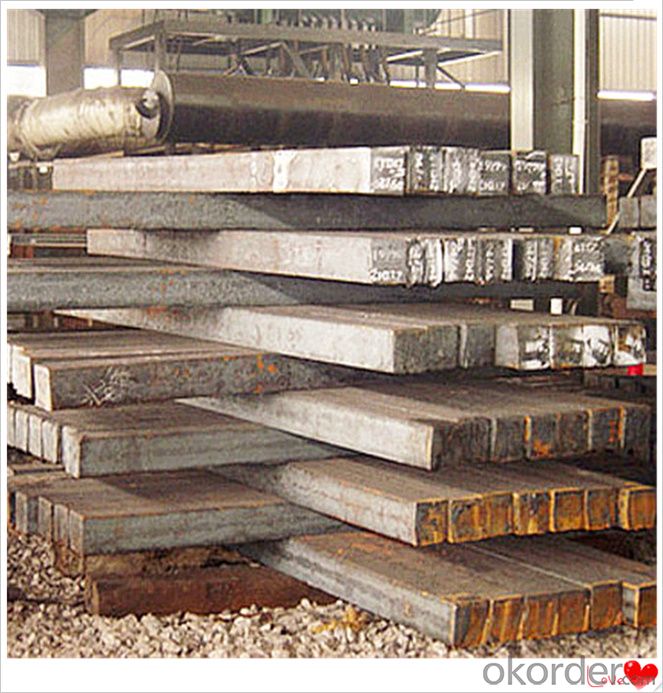
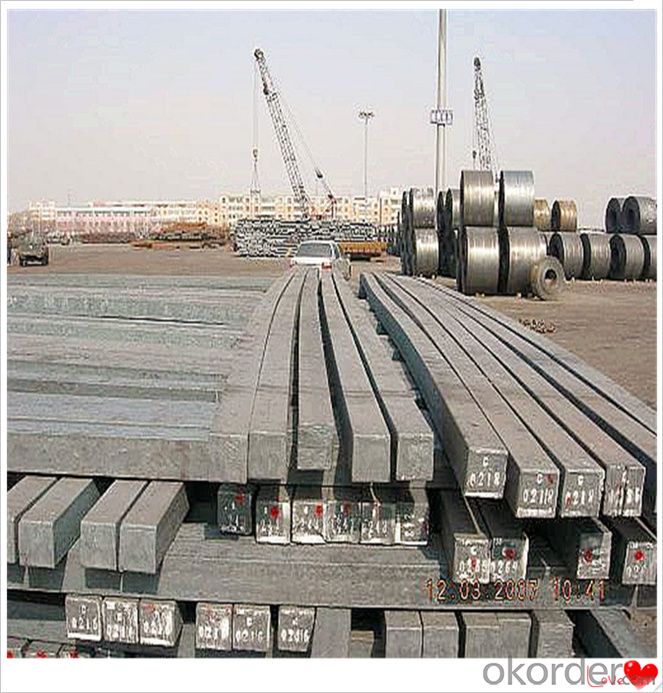
Processing
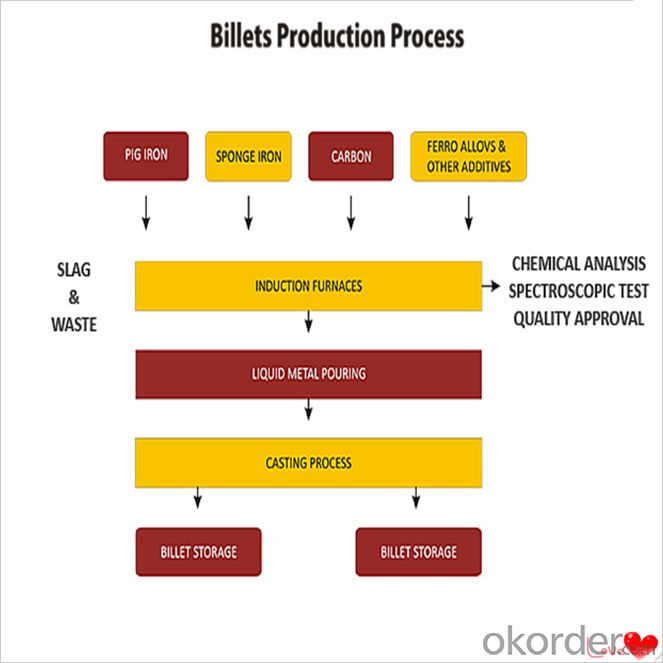
Usage-Billet Steel
Used for the plant, the bridge,shipment building high-rise building construction,lifting and transportation machinery, equipment manufracturing base building the support foundation pile manufacturing.
Billets, or ingots (as they sometimes referred to), are not of practical use until they have been formed into more functional shapes and sizes. While they have already been put in the furnace, they still require a series of shaping and molding procedures such as hot and cold working, milling and cutting before they are sold in hardware stores, or used for different applications. The unformed billets, however, can be used in striking currency such as coins and as reserves, similar to gold bars.
FAQ-Billet Steel
We have organized several common questions for our clients,may help you sincerely:
1) How about your company?
A world class manufacturer & supplier of castings forging in carbon steel and alloy steel,is one of the large-scale professional investment casting production bases in China,consisting of both casting foundry forging and machining factory. Annually more than 8000 tons Precision casting and forging parts are exported to markets in Europe,America and Japan. OEM casting and forging service available according to customer’s requirements.
2) How to guarantee the quality of the products?
We have established the international advanced quality management system,every link from raw material to final product we have strict quality test;We resolutely put an end to unqualified products flowing into the market. At the same time, we will provide necessary follow-up service assurance.
3) How long can we receive the product after purchase?
In the purchase of product within three working days, We will arrange the factory delivery as soon as possible. The pecific time of receiving is related to the state and position of customers.Commonly 7 to 10 working days can be served.
4)Do you have your own QC department?
Yes, we have, our QC department will inspect the goods during the process of mass production and after completion of production.
hot sale!!! Cast Steel Grades/ mild steel bar/ billet steel
(1): High quality steel with reasonable price.
(2): Wide excellent experiences with after-sale service.
(3): Every process will be checked by responsible QC which insures every product's quality.
(4): Professional packing teams which keep every packing safely.
(5): Trial order can be done in one week.
(6): Samples can be provided as your requirements.
- Q: What are the different types of steel billet handling equipment?
- In the steel production process, a variety of steel billet handling equipment is utilized. These equipment are specifically designed to efficiently transport and move steel billets, which are semi-finished metal products utilized for further processing. 1. Overhead Cranes: Steel mills and foundries often employ overhead cranes for handling and transporting steel billets within their facilities. These cranes possess a high lifting capacity, allowing for seamless movement of billets from one location to another. 2. Mobile Cranes: Offering versatility, mobile cranes can handle steel billets in both indoor and outdoor settings. Equipped with hydraulic systems, these cranes excel at lifting and maneuvering heavy loads. 3. Forklifts: Warehouses and storage facilities frequently rely on forklifts for the handling of steel billets. These machines feature front forks that can be raised or lowered to lift and move the billets. 4. Grab Buckets: Specifically designed for bulk materials, including steel billets, grab buckets feature a bucket-like structure that can be opened and closed to securely grip and release the billets. They are commonly employed at ports and shipping yards for the loading and unloading of billets from ships. 5. Conveyor Systems: Conveyor systems provide continuous movement of steel billets along a predetermined path. They facilitate the transportation of billets between different stages of the production process or for loading and unloading from trucks or trains. 6. Roller Tables: Utilized for transferring steel billets from one conveyor or machine to another, roller tables consist of a series of rollers that allow for smooth and controlled movement of the billets. 7. Magnetic Lifters: Magnetic lifters utilize an electromagnetic field to lift and transport steel billets, making them highly effective for handling ferrous materials. This magnetic force ensures secure gripping and effortless movement. 8. Palletizers: Palletizers are employed to stack and organize steel billets on pallets. Capable of automatically arranging billets in a specific pattern, they are ideal for storage or transportation purposes. Each type of equipment offers unique advantages and is specifically utilized based on the requirements of the steel production process. Factors such as billet size and weight, required transportation distance, and facility-specific needs determine the appropriate handling equipment selection.
- Q: What are the main factors affecting the strength of steel billets?
- The main factors affecting the strength of steel billets are the composition of the steel, the heat treatment process, and the presence of any impurities or defects in the billet.
- Q: What is the drop per minute of the billet temperature at 850?
- Cold rolling is not considered. The initial rolling temperature (surface) of the billet is generally 1000-1150 degrees.
- Q: How do steel billets compare to other types of metal billets?
- Steel billets possess several advantages over other types of metal billets. Firstly, the outstanding strength and durability of steel make it highly resistant to wear and tear, rendering steel billets suitable for a wide range of applications in the construction, automotive, and manufacturing industries. Furthermore, steel billets exhibit excellent heat resistance, enabling them to endure high temperatures without distorting or compromising their structural integrity. This quality makes steel billets perfect for the production of components that are subjected to extreme heat, such as engine parts or industrial machinery. Moreover, steel billets provide versatility in terms of shape and size. They can be effortlessly molded and formed into various configurations, empowering manufacturers to create intricate and complex designs. This adaptability makes steel billets the preferred choice in industries that necessitate customized or intricate parts. Additionally, steel billets boast high recyclability, making them an environmentally sustainable choice. The recycling process of steel requires significantly less energy compared to other metals, resulting in reduced carbon emissions and environmental impact. This aspect has led to an increased preference for steel billets in industries that prioritize sustainability and environmental responsibility. In conclusion, steel billets surpass other metal billets due to their exceptional strength, heat resistance, versatility, and recyclability. These qualities make steel billets the preferred choice for numerous industries, offering a combination of durability, functionality, and environmental sustainability.
- Q: What are the potential applications of steel billets in the chemical industry?
- Steel billets have several potential applications in the chemical industry. They can be used in the construction of chemical processing equipment, such as reactors, tanks, and pipelines, due to their high strength and resistance to corrosion. Steel billets can also be used as raw material for manufacturing various chemicals, including fertilizers, solvents, and pharmaceuticals. Additionally, they can be employed in the production of catalysts, which play a crucial role in chemical reactions. Overall, steel billets offer versatility and durability, making them suitable for various applications in the chemical industry.
- Q: How are steel billets used in the production of structural components?
- Steel billets are used in the production of structural components by being heated and molded into desired shapes such as beams, columns, and plates. These billets serve as the starting material, which is then further processed through rolling, forging, or extrusion to create strong and durable structural components used in various industries such as construction, automotive, and aerospace.
- Q: How are steel billets used in the production of construction components?
- Steel billets are an intermediate product used in the production of construction components. They are typically heated and then shaped into various forms such as beams, columns, or rods, which are essential for constructing buildings, bridges, and other structures.
- Q: How are steel billets used in the production of sheet metal?
- Steel billets are heated and then rolled into thin sheets to create sheet metal. This process involves passing the billets through a series of rollers, which gradually reduce their thickness. These sheets can then be further processed and shaped to create various products, such as car bodies, appliances, and construction materials.
- Q: What are the different types of steel billets available?
- There are several different types of steel billets available, each with its own unique properties and uses. Some of the most common types include: 1. Carbon Steel Billets: These are made primarily of iron and carbon, with trace amounts of other elements. They are known for their high strength and durability, making them suitable for a wide range of applications such as construction, automotive, and machinery manufacturing. 2. Alloy Steel Billets: As the name suggests, these billets are made by adding various alloying elements such as chromium, nickel, or manganese to the carbon steel. This enhances the mechanical properties of the steel, making it more resistant to corrosion, wear, and heat. Alloy steel billets are commonly used in the production of tools, gears, and high-strength components. 3. Stainless Steel Billets: These billets contain a minimum of 10.5% chromium, which gives them excellent corrosion resistance. Stainless steel billets are widely used in industries such as food processing, chemical, and medical, where hygiene and resistance to rust are crucial. 4. Tool Steel Billets: Designed for applications requiring high hardness, wear resistance, and toughness, tool steel billets are often used in the production of cutting tools, dies, and molds. They are made by adding elements such as tungsten, vanadium, or molybdenum to carbon steel, resulting in a material capable of withstanding extreme conditions. 5. Low Alloy Steel Billets: These billets contain small amounts of alloying elements, typically less than 5%, such as manganese, silicon, or copper. They offer improved strength, toughness, and weldability compared to carbon steel, making them suitable for structural applications in construction and engineering. 6. Microalloyed Steel Billets: Also known as HSLA (High-Strength Low-Alloy) steel, microalloyed steel billets contain small amounts of niobium, vanadium, or titanium. This results in a fine-grained microstructure and enhanced strength, allowing the production of lighter and more efficient structures in industries such as automotive and aerospace. These are just a few examples of the different types of steel billets available. Each type has its own specific properties and applications, and choosing the right type depends on the intended use and desired characteristics of the final product.
- Q: How to calculate the cost price of billet?
- The ratio of slag to billet (63% fine powder) is about 3:1, which accounts for about 60%. of billet cost
Send your message to us
Q275 Steel Billets Q235,Q255,Q275,Q345,3SP,5SP,20MnSi Made in China
- Loading Port:
- China main port
- Payment Terms:
- TT OR LC
- Min Order Qty:
- 20 m.t.
- Supply Capability:
- 200000 m.t./month
OKorder Service Pledge
OKorder Financial Service
Similar products
Hot products
Hot Searches
Related keywords
